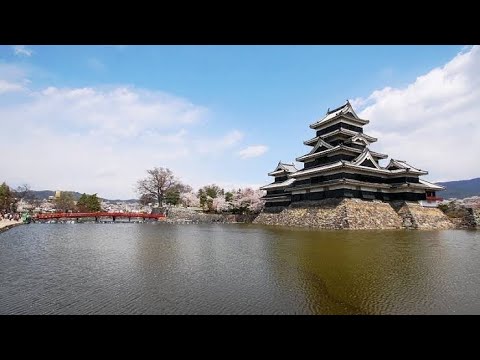Today we will be exploring the Matsumoto Castle in Nagano. Matsumoto Castle is one of Japan’s premier historic castles, along with Himeji and Kumamoto castles. The building is also known as the “Crow Castle” due to its black exterior. It was the seat of the Matsumoto domain. The keep (tenshukaku), which was completed in the late sixteenth century, maintains its original wooden interiors and external stonework. It is listed as a National Treasure of Japan.
Matsumoto Castle is a flatland castle (hirajiro) because it is not built on a hilltop or amid rivers, but on a plain.[1] Its complete defences would have included an extensive system of inter-connecting walls, moats, and gatehouses.
The castle’s origins go back to the Sengoku period. At that time Shimadachi Sadanaga of the Ogasawara clan built a fort on this site in 1504, which originally was called Fukashi Castle. In 1550 it came under the rule of the Takeda clan and then Tokugawa Ieyasu.
When Toyotomi Hideyoshi transferred Ieyasu to the Kantō region, he placed Ishikawa Kazumasa in charge of Matsumoto. Kazumasa and his son Yasunaga built the tower and other parts of the castle, including the three towers: the keep and the small tower in the northwest, both begun in 1590, and the Watari Tower; the residence; the drum gate; the black gate, the Tsukimi Yagura, the moat, the innermost bailey, the second bailey, the third bailey, and the sub-floors in the castle, much as they are today. They also were instrumental in laying out the castle town and its infrastructure. It is believed much of the castle was completed by 1593–94.
Subscribe to the official BEJ LIVE channel here:
You can support our mission here:
Patreon:
Paypal:
Merch store:
Bitcoin address:
12DcfBVZDwS9Ys2vbUmbx45iZ22EFexM8e
SUBSCRIBE to our channel:


AloJapan.com